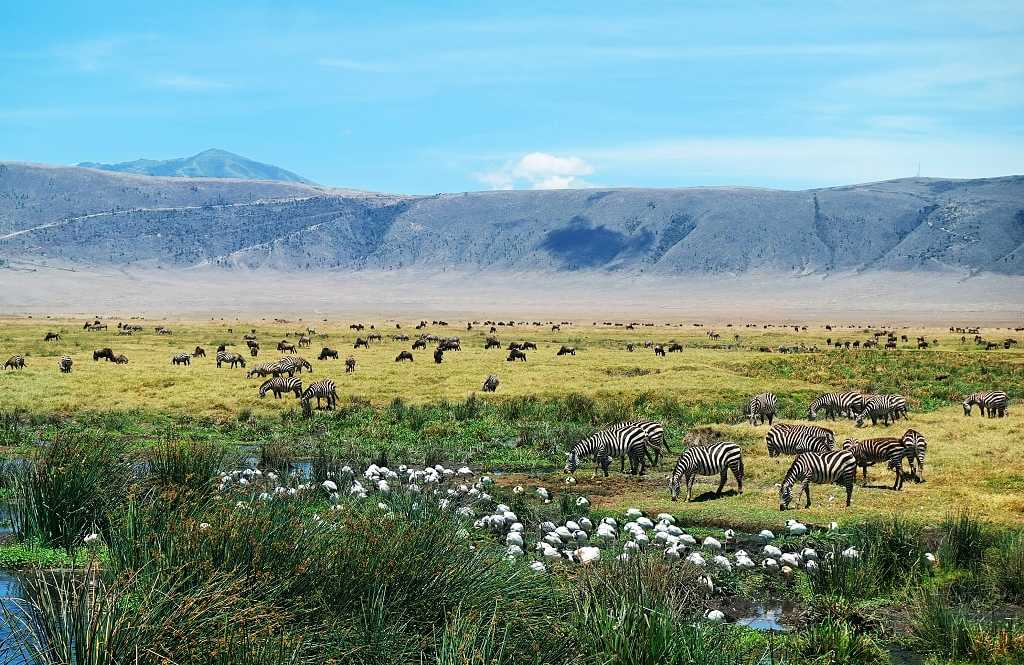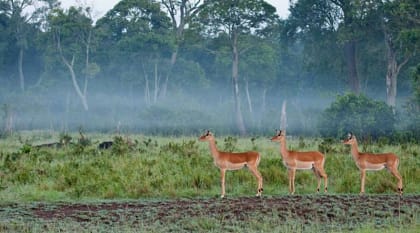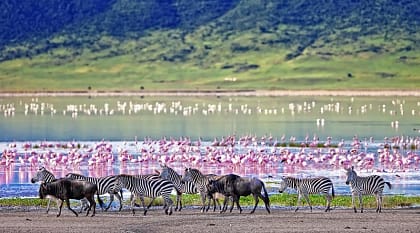Serengeti National Park vs Maasai Mara National Reserve for the Great MigrationThe choice between Tanzania and Kenya for a Great Migration safari is a matter of scale, timing, and spectacle. They are two parts of the same vast ecosystem and the wildebeest herds are oblivious to the border they cross. Tanzania’s Serengeti National Park is immense, offering a feeling of truly endless plains where the migration plays out for about nine months of the year.
This is where you witness the dramatic calving season, from January to March and the long journey north. Kenya’s Maasai Mara National Reserve is a smaller, more concentrated part of that ecosystem. While the herds are typically only in the Mara from late July to October, this is the stage for the world’s most dramatic wildlife event: the frenzied river crossings of the Mara River, where crocodiles lie in wait. The Mara’s smaller size can mean more concentrated game viewing, but also potentially more vehicles during this peak season.
Ngorongoro Crater vs Amboseli National ParkThese parks offer world-class wildlife experiences beyond the migration. Tanzania’s Ngorongoro Crater is a geological marvel, the world’s largest intact volcanic caldera. It shelters an unprecedented density of wildlife, including the Big Five, in a self-contained ecosystem. It provides an almost guaranteed spectacle of animal interactions in a single day.
By contrast, Kenya’s Amboseli National Park is a landscape defined by its subjects. It is renowned for its vast herds of elephants roaming across dusty plains and lush marshlands, all set against the breathtaking, iconic backdrop of Mount Kilimanjaro, which rises just across the border in Tanzania. Amboseli offers a quintessential East African vista, while Ngorongoro offers an unbelievable concentration of fauna.
Cost of Safari: Tanzania vs KenyaTanzania has generally positioned itself as a more premium safari destination, particularly on its popular Northern Circuit. Park fees, especially for the Serengeti and Ngorongoro Conservation Area, are significantly higher than in Kenya. The classic Tanzanian safari often involves more driving between distant parks or costly internal flights. This contributes to a higher overall price point.
Kenya, while home to many exclusive luxury camps, offers a wider spectrum of pricing. It provides more accessible options for mid-range and budget-conscious travelers, with more affordable park fees and a greater variety of accommodation just outside park boundaries.
Travel Times and LogisticsOne of Kenya’s key advantages is its relatively compact and well-connected main safari circuit. Many premier parks, including the Maasai Mara, Lake Nakuru, and Amboseli, are accessible via a four- to six-hour drive or a short flight from Nairobi, which is a major international hub. This makes combining diverse landscapes in a shorter timeframe more feasible.
Tanzania is a vast country. A driving safari on the Northern Circuit (covering Tarangire, Ngorongoro, and the Serengeti) is a classic journey, but involves long days in a vehicle. Connecting the Northern Circuit with the more remote southern parks like Nyerere or Ruaha almost always requires internal flights, making itineraries more complex and expensive.
Why Choose Tanzania Over Kenya?Tanzania offers a safari experience defined by epic scale and iconic landmarks.
- Unmatched Scale: The sheer vastness of the Serengeti provides a sense of boundless wilderness that is hard to replicate. The Great Migration is within its borders for most of the year.
- World-Famous Landmarks: Tanzania is home to Africa’s most famous geological wonders, the Ngorongoro Crater and Mount Kilimanjaro, Africa's highest peak.
- The Full Migration Cycle: Witnessing the birth of hundreds of thousands of wildebeest during the calving season in the southern Serengeti is a unique and profound experience only available in Tanzania.
- Remote Wilderness: If you are interested in getting off the beaten path, Tanzania’s Southern and Western circuits, in parks like Ruaha, Nyerere, and Katavi, offer exceptionally wild and exclusive safari experiences.
Why Choose Kenya Over Tanzania?Kenya excels in accessibility, value, and delivering the most famous wildlife spectacle.
- The River Crossings: The Maasai Mara is the prime location to witness the dramatic, action-packed river crossings of the Great Migration.
- Accessibility and Value: A well-developed tourism infrastructure, more competitive pricing, and easier logistics from the hub of Nairobi make it a great choice for first-time safari-goers or those on a tighter schedule or budget.
- Diverse Circuits: It is easier to combine classic savanna safaris in the Mara with the unique landscapes of the Great Rift Valley lakes or the semi-arid northern reserves like Samburu.
- Cultural Connection: The deep, long-standing relationship between tourism and the Maasai people in the Mara ecosystem offers rich and easily accessible opportunities for authentic cultural encounters.
For information on a safari in both countries, see our Kenya and Tanzania safaris.








